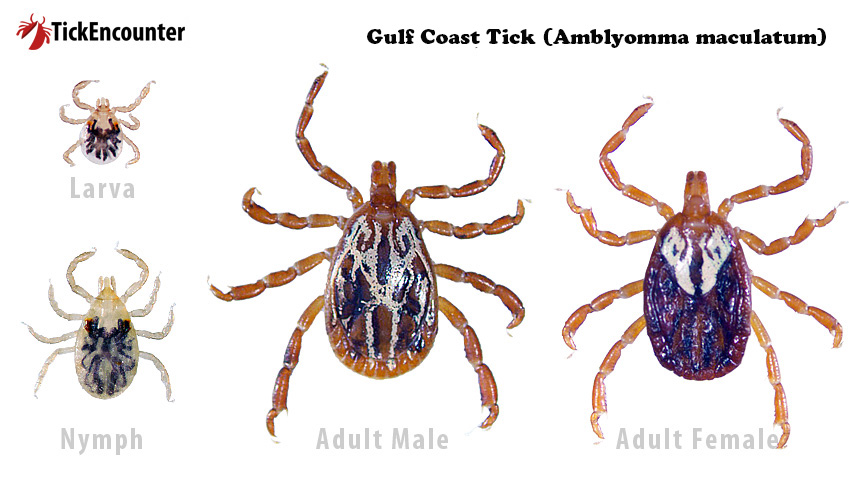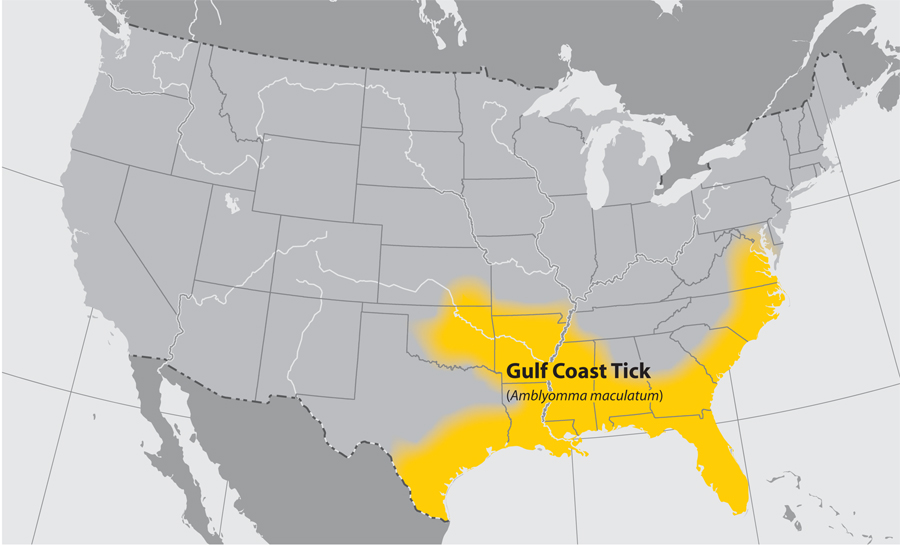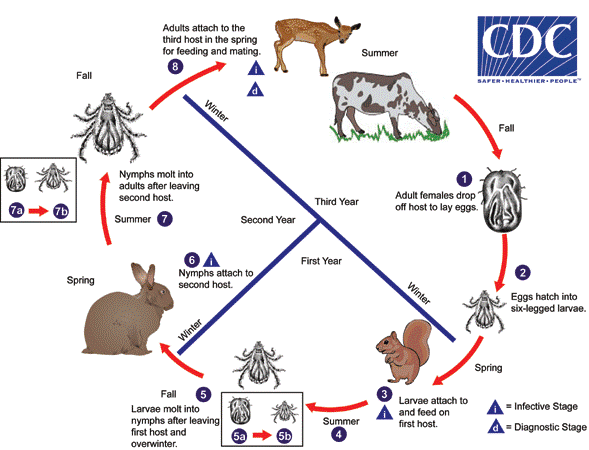Gulf Coast Tick
Amblyomma maculatum
Why should you check for ticks?
Worldwide, ticks are known transmitters of pathogens to humans, pets, livestock, and wild animals. Removing a tick quickly can reduce the risk of contracting a tick-borne disease.
What do Gulf Coast ticks look like?
Gulf Coast ticks vary in size depending on the life stage. Adult females are the largest while adult males are slightly smaller than the females. Nymphs are about the size of a poppy seed while the larvae are slightly larger than the head of a pin.

Image Source: TickEncounter
When and where are you most likely to see a Gulf Coast tick?
Gulf Coast tick peak activity depends on their geographic region. The phenology of these ticks in Pennsylvania is still largely unknown. To date, adults have been collected in July and August, while no immature stages have been collected. Adult Gulf Coast ticks in Pennsylvania have been collected in habitat ranging anywhere from shaded woods to sunny meadows. These ticks can quest for extended periods at peak temperatures and prefer drier environments.

Image Source: CDC
Gulf Coast tick life cycle
The Gulf Coast tick is a three-host tick, such that each development stage feeds on a different host. Newly hatched six-legged larvae feed on small animals such as birds, rodents, and rabbits. After molting the tick becomes an eight-legged nymph which feeds on the same hosts as the larvae. After the tick’s final molt, it becomes an eight-legged adult and feeds on deer and other wildlife.

Image Source: CDC
Associated Pathogens
Pathogens associated with the Gulf Coast tick are
Rickettsia parkeri (R. parkeri rickettsiosis) which causes a form of spotted fever in humans. This is closely related to Rocky Mountain spotted fever but can be less severe.
Return to homepage